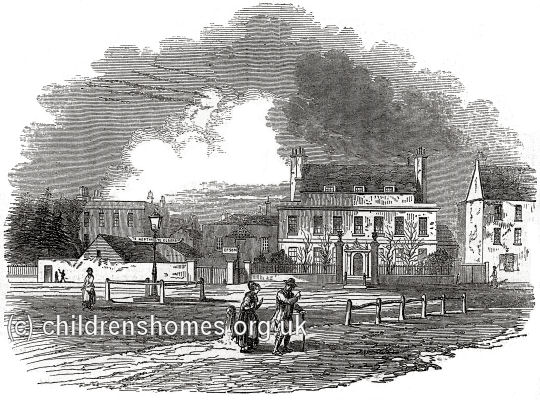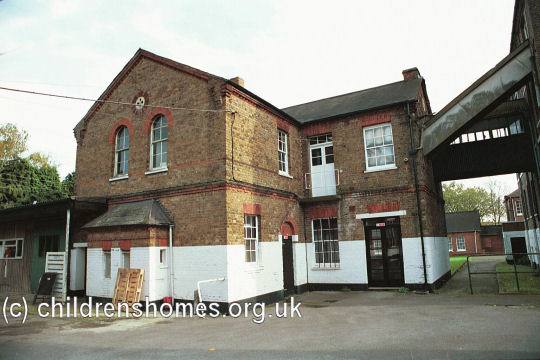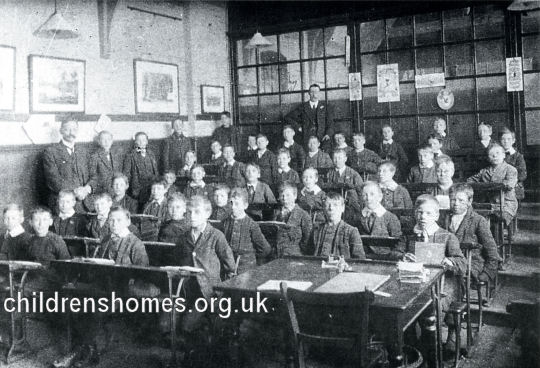Poor Law Homes
Under the Old Poor Law, prior to 1834, when poor relief was primarily administered by individual parishes, the workhouse was almost the only form of accommodation provided for those being supported by the parish, whether they be adult or child.
Not every parish operated a workhouse, however, with the majority preferring to offer their paupers 'out-relief' — a hand-out in the form of money, bread, clothing etc. For children who became caught up in the poor relief system, there was virtually no special provision. A rare exception was introduced by Hanway's Act of 1767 promoted by Foundling Hospital governor Jonas Hanway, which required that all pauper children aged under six from Metropolitan parishes be sent to a school in the countryside at least three miles from London or Westminster. The nursing and maintenance of each child was to cost at least two shillings and sixpence per week. To satisfy these requirements, parishes sent their children to privately run 'baby farms', one of which is described in Oliver Twist.
Although major changes to the poor relief system were introduced by the 1834 Poor Law Amendment Act, such as the introduction of larger administrative areas known as Poor law Unions, there was little in the legislation pertaining to the treatment of pauper children. London unions continued to send their children to privately run establishments, the largest of which were Mr Aubin's at Westow Hill, Norwood which opened in 1821, and Mr Drouet's at Surrey Hall in Tooting. The Act was however repealed in 1844 and by 1850 only one private establishment, the Metropolitan Infirmary for Children at Margate, remained in operation for taking children under contract from London workhouses.

Mr Drouet's School, Tooting. © Peter Higginbotham
Workhouse Schools
Under the 1834 Act, Poor Law unions were required to provide at least three hours a day of schooling for workhouse children. Although the children could attend local outside schools, most unions set up their own schoolrooms and appointed a schoolmaster and/or schoolmistress. The children were taught 'reading, writing, arithmetic, and the principles of the Christian Religion, and such other instruction as may fit them for service, and train them to habits of usefulness, industry and virtue.'
At many workhouses, the buildings included a dedicated school room or school block, such as this one at Ongar in Essex, which had separate entrances for the boys and girls:

Former Ongar Workhouse School Block, 2000. © Peter Higginbotham
Boards of Guardians were, however, sometimes reluctant to spend money on even the most basic equipment such as writing slates. Occasionally, it was even questioned whether pauper children even needed to be taught basic literacy. This was partly justified by the 1834 Act's principle of "less eligibility" which, it was argued, demanded a lower quality of education than would be enjoyed by the children of those of modest means outside the workhouse. In 1836, the Guardians of the Bedford Union suggested a compromise by teaching workhouse children to read but not to write. Likewise, in 1839 the Guardians of the Pershore Union decided that 'it is quite unnecessary to teach the children in the union workhouse the accomplishment of writing'. However, they were were forced to change their minds in 1844 when the Parish Apprentices Act demanded that 'pauper apprentices be able to read and write their own names unaided.' Teaching pauper children to read and write would, in the long run it was argued, make them less likely to need poor relief.

Hackney workhouse school room, c.1900.
The quality of the education provided in workhouse classrooms varied considerably, but in some cases was probably better than was available in other types of school.
In the 1840s, St Marylebone operated the following timetable in its workhouse school for children between 7 and 16 years of age:
| Boys' School | Girls' School | |||
|---|---|---|---|---|
| 6.00-7.00 | Rise, make beds, prayers, clean shoes and wash. | 6.00-8.00 | Rise, make beds, prayers, clean shoes, wash. Prayers and religious instruction. | |
| 7.00-7.45 | Gymnastics exercises (Saturdays excepted) | |||
| 7.45-9.00 | Prayers. Breakfast. Play. | 8.00-9.00 | Breakfast. Recreation. | |
| 9.00-10.00 | Historical reading, with explanations. | 9.00-11.30 | Reading, spelling, tables, arithmetic. | |
| 10.00-11.00 | General and mental arithmetic, tables, use of clock dial for learning the time of day. | |||
| 11.00-12.00 | Grammar. Parsing and Dictation. | 11.30-12.30 | Working in copy books. Dictation. | |
| 12.00-2.00 | Dinner. Recreation. | 12.30-2.00 | Dinner. Recreation. | |
| 2.00-3.00 | Writing in copy books & arithmetic. | 2.00-5.00 | Needlework, knitting and domestic employment. | |
| 3.00-4.00 | Reading with explanations. | |||
| 4.00-5.00 | Geography, with maps. | 5.00-6.00 | Supper. Recreation. | |
| 6.00 | Supper | 6.00-8.00 | Needlework, knitting & domestic employment. | |
| 8.00 | Prayers. retire to bed. | 8.00 | Prayers. retire to bed. | |
In 1868, a report by Poor Law Board Inspector, Mr Bowyer, described an ordinary workhouse school at that time:
Although authors of the 1834 Royal Commission Report had initially recommended separate establishments for different types of pauper (children, the able-bodied, the elderly), the 'general mixed workhouse' rapidly became the norm. However, from the 1840s onwards, a few unions did begin to set up separate accommodation for pauper children away from the main workhouse, and where children were given industrial training to make them employable in later life. A number of different types of children's establishment were made use of by the Poor law authorities, the main ones being listed below and described in more detail on separate pages:
- Separate/District Schools
- Cottage Homes
- Separate/District Schools
- Certified Schools
- Boarding Out
- Training Ships
In 1930, the Boards of Guardians were abolished and responsibility for the poor relief system was transferred to county and borough councils. The operation of poor law children's homes after 1930 is covered on a separate page.
Links
- www.workhouses.org.uk — The Workhouses Website
Except where indicated, this page () © Peter Higginbotham. Contents may not be reproduced without permission.


